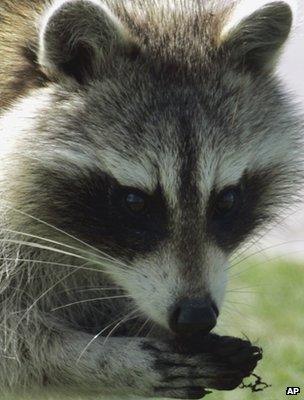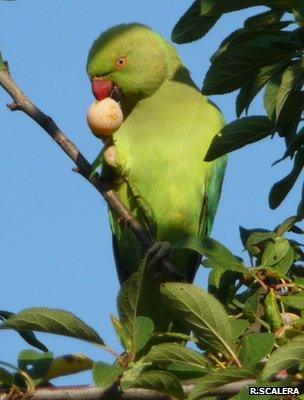Invasive alien species threaten urban environments
- Published

Raccoon populations in a number of European countries have continued to grow and spread
Europe's towns and cities are particularly vulnerable to the threat posed by invasive species, say experts.
They say urban areas are at higher risk from invasive alien species (IAS) as a result of more transport links.
IAS are non-native plants or animals that have no natural predators, spread rapidly and overwhelm an area's native flora and fauna.
Next week, the European Commission is expected to outline its plans to tackle the continent's invasive species.
"These non-indigenous species represent one of the main threats to the world's biodiversity," explained Chantal van Ham, European program officer for the International Union for Conservation of Nature (IUCN).
"This threat is set to increase unless meaningful action is taken to control their introduction and establishment," she added.
"The problem is that invasive species take over resources and space from the indigenous species.
"Urban areas are quite vulnerable to these species. Often they are introduced, for example, through the trade in plants but also through accidental arrivals in ports and airports."
City limits
In order to address the issue, the IUCN is hosting a conference on the topic in Gland, Switzerland, external on Thursday.

Listed as an invasive species, Europe's population of rose-ringed parakeets continues to increase
Participants will include local authorities, policymakers, NGOs and scientists.
"Municipalities or local authorities have a really key role in possible action to reduce the risk of these species [becoming established]," Ms van Ham told BBC News.
"But it is also important that local authorities have the support needed in order to take that action.
"What we aim to do with this conference is to bring together experts - not only scientists but also different governmental levels and NGOs to see how we can strengthen collaboration and exchange knowledge on how to combat invasive species at the urban level."
Recently, the IUCN published a report highlighting a number of case studies, external on how EU nations were tackling invasive species.
Examples included how raccoons, a North American native mammal, were spreading through the German capital city, Berlin.
It also highlighted a number of pan-European threats, such as the spread of Japanese knotweed, which is described by experts as one of the most high-profile and damaging invasive weeds in Europe and North America, external.
Next week, the European Commission is expected to publish it plans to tackle invasive species, external. It is expected to announce pan-EU legislative measures as part of the EU's biodiversity strategy.
"There is a proposal for a legal framework that will require action in all EU member states to prevent the entry and establishment of invasive species," said Ms van Ham.
"It is also expected to focus on what control methods are available and how to manage already established invasive species populations.
"We also hope the European Commission strongly supports the promotion of sharing best practices and lessons learned by different European countries, and help promote awareness of the issue."
- Published16 May 2013
- Published21 February 2013
- Published23 January 2013
- Published13 May 2013